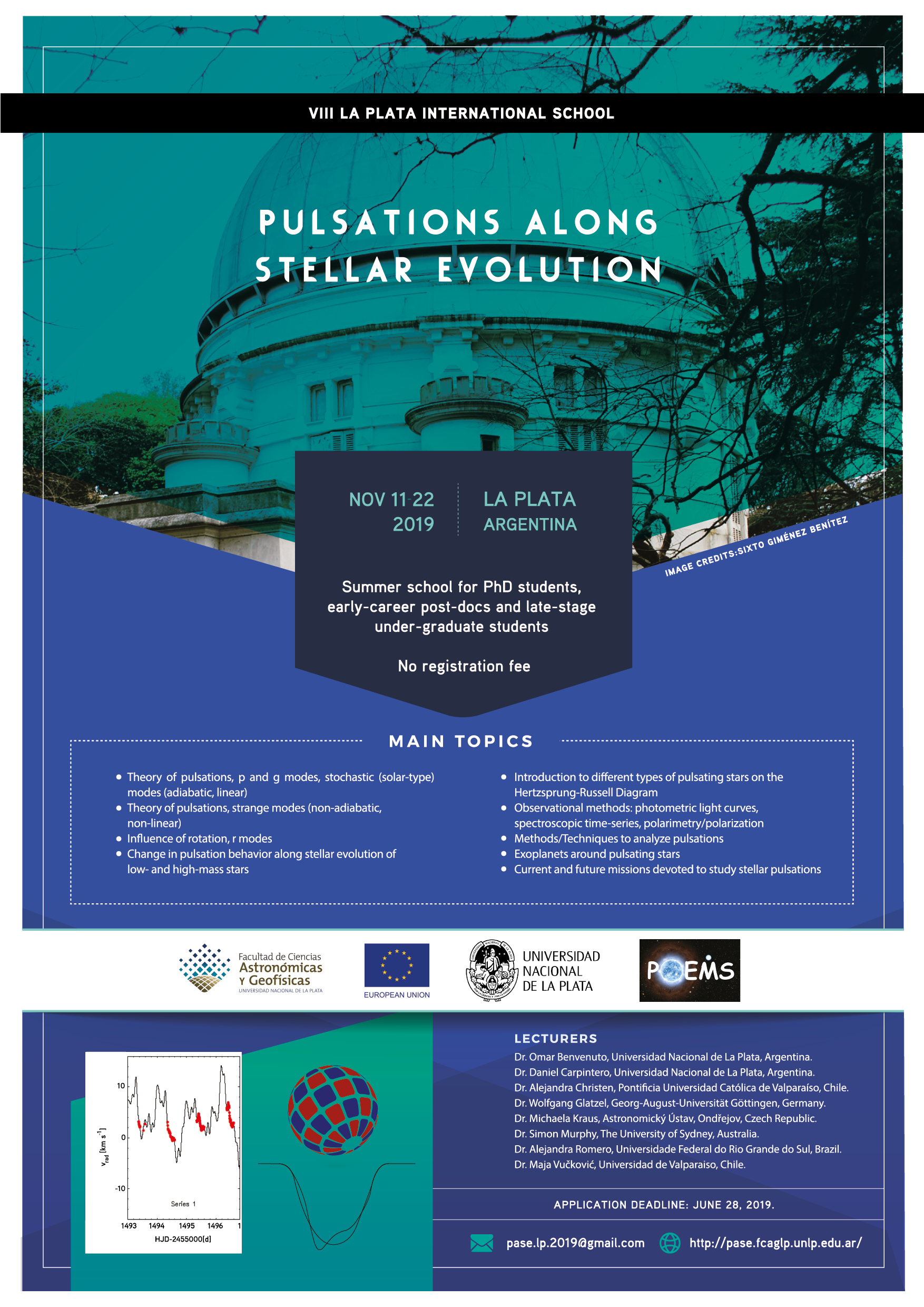If you bring your own laptop, you need to have the following software installed:
- FORTRAN compiler.
- Python 3.0, preferably 3.6, and the option to pip install any packages on the fly.
Eleanor python package. You can install using >pip install eleanor.
- Lightkurve.
- Topcat.
- Period04. .
On linux systems with non-English language, edit the file "period04" and add the following line:
export LC_NUMERIC=C
- R.
The webpage to download software R is , there you will find manuals and other stuff about R.
.
Some of the main R packages for wavelets:
1) "wavelets",
to install: ,
documentation:
2) WaveletComp 1.1,
to install ,
documentation: ,
3) ‘wmtsa’
to install
documentation:
4) waveD
to install
documentation
Some R packages or libraries for time series analysis: ts, tsbox, xts, zoo, fts, tseries, timeSeries. tsibble.
Based on the powerful tools provided by asteroseismology and the new generation of satellites (Kepler, BRITE, and upcoming missions such as TESS and PLATO) combined with ground-based surveys (e.g., ASAS, KELT) delivering long-term photometric observations with high precision, the Hertzsprung-Russell (HR) diagram is nowadays populated almost completely with instability domains, meaning that almost all stars across the HR diagram pulsate in specific modes. The excitation of stellar oscillations strongly depends on the physical processes within the star as well as on the internal stellar structure. Observable oscillation frequencies can further be modified by stellar rotation and magnetic fields. Identifying and analyzing stellar pulsation frequencies hence provide the only means to investigate in great detail and with high precision, the physics of stars in all mass ranges and throughout their entire lifetime.
The aim of this Summer School is to train the next generation of researchers in the field of stellar pulsations and to sensitize them for the importance of asteroseismology for our understanding of stellar structure and the evolution of stars.
The school is aimed at PhD students, but early-career post-docs or late-stage under-graduate students can apply as well, provided that their main research field lies within the school's subjects. The school will be divided into theoretical and practical courses.
